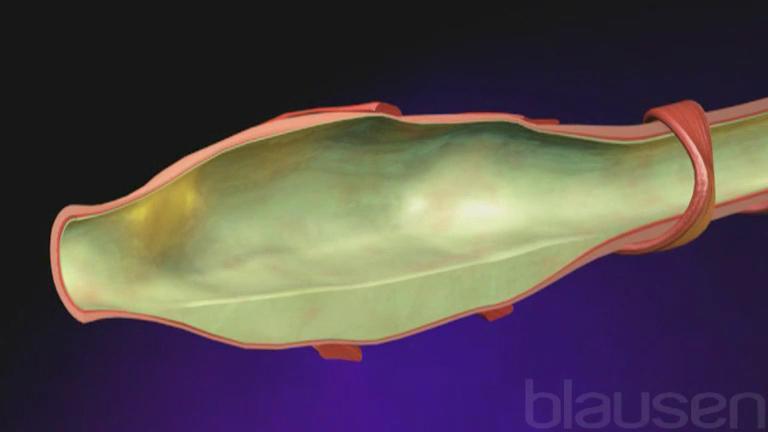
Bronchiectasis
During normal respiration, air travels through the nose, down the trachea, and into smaller and smaller airways called bronchi. The bronchi divide into bronchioles, and finally into tiny grape-like clusters of thin, fragile sacs called alveoli. In alveoli, oxygen is exchanged for carbon dioxide in the blood. Bronchiectasis is an abnormal destruction and widening of the bronchi due to recurrent inflammation or infection. This results in the airways becoming abnormally enlarged. Extra mucus tends to form and pool in the enlarged airways. The small hairs that line the airways, cilia, are also damaged, affecting the patient’s ability to rid the lungs of dust and germs. Because the cilia no longer function properly, the pooled mucus is also difficult to clear. Lung infections are common. A person may be born with bronchiectasis or may acquire it later in life as a result of other lung disorders. The main symptom of bronchiectasis is a constant cough that produces a lot of phlegm and mucus. Although the patient generally feels well–without fever or pain—fatigue, weight loss, shortness of breath, and wheezing can also be present. Bronchiectasis can be treated in a number of ways, including antibiotics and chest physiotherapy.